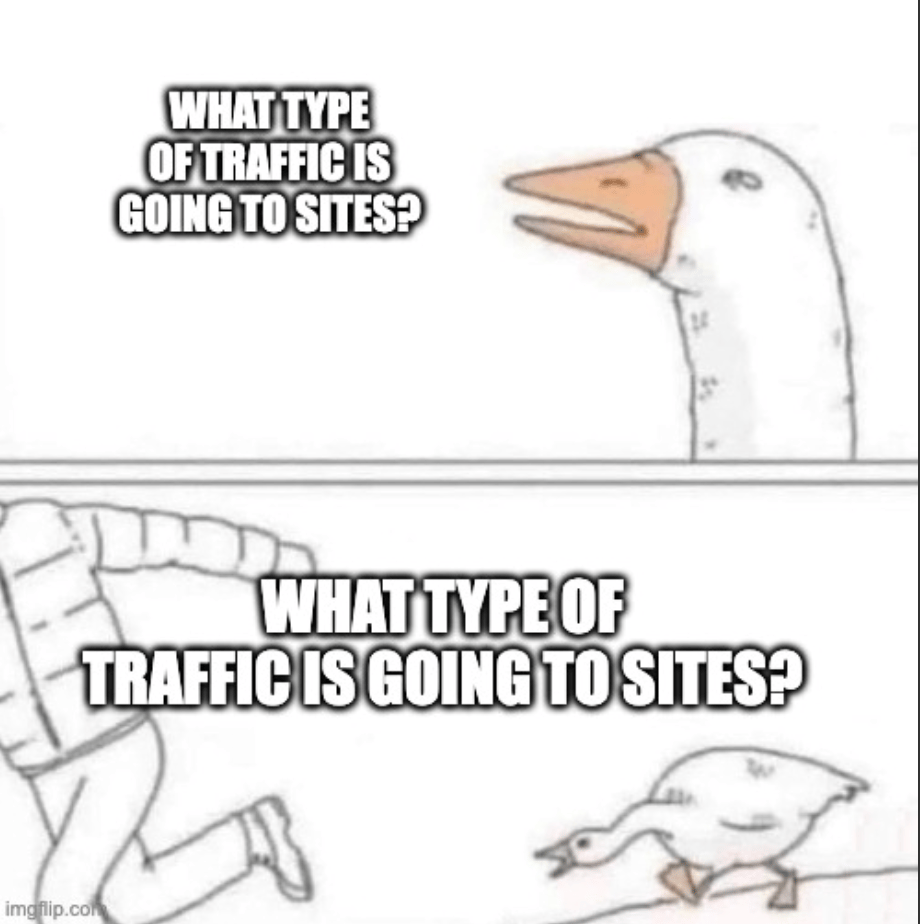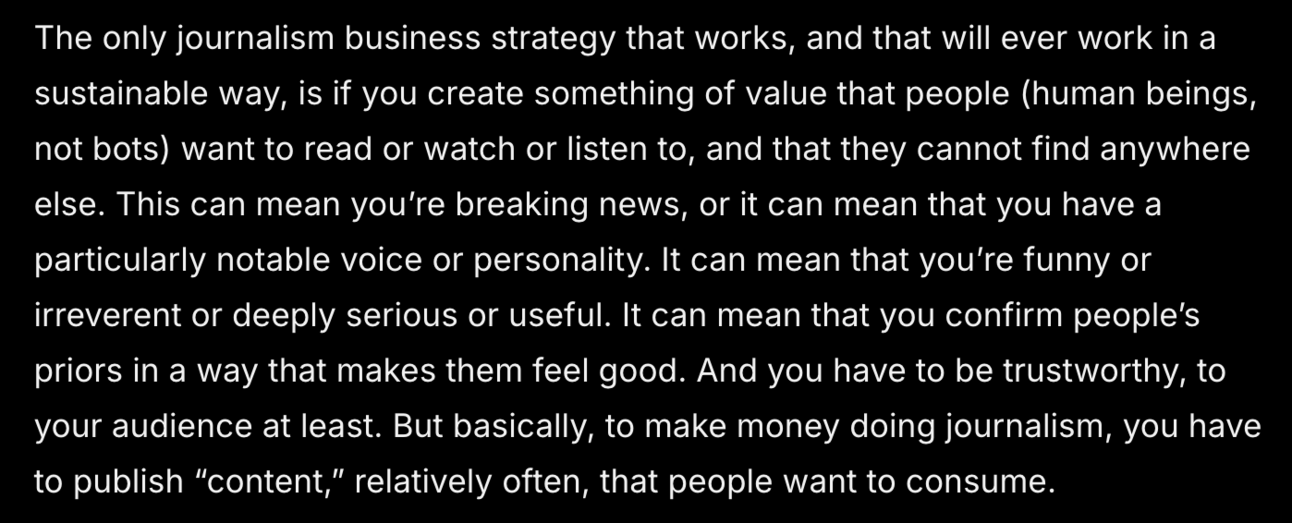- AI Sidequest: How-To Tips and News
- Posts
- A new top model for creative writing
A new top model for creative writing
Plus, dictation that finally works (even with a Roomba running)
Issue 69
On today’s quest:
— Wispr Flow for dictation
— A new top model for creative writing
— The em dash myth that will not die
— AI is killing the web
— Can anything save journalism (and the web)?
— We really need AI to be good at radiology
— Learn about AI
Tip: Wispr Flow for dictation
I've used voice dictation off and on for more than 20 years. In fact, part of the reason I started podcasting is that I hurt my wrist and was using Dragon NaturallySpeaking for my work, including writing articles, and it seemed like a natural extension to start podcasting. For my first podcast — a science show — I just read my articles. But the tools have never been very precise.
But I recently hurt my finger and heard about a dictation tool, called Wispr Flow on the AI Daily Brief podcast, and I've been giving it a try. So far, it's better than anything I've used in the past. It seems to use AI to figure out where to put the punctuation and what you mean to say if you stumble or misspeak, and it even works when my husband is listening to a YouTube video in the same room and the Roomba is running. In fact, I used it to write this section! (The only change I had to make was to add two commas.)
I type fast, but dictation is still much faster. Reliable dictation is my holy grail for increased productivity.
The free trial gives you 2,000 words per week, and after two days of testing, I’m willing to pay to get unlimited use. Hit me up if you want a referral code to get a $15 credit.
A new top model for creative writing
A new open-source model from the Chinese company Moonshot, called Kimi-K2-instruct,1 just topped an AI leaderboard for creative writing, which got me thinking — what does that even mean?
It turns out the leaderboard uses a top Claude model to evaluate the writing using a rubric that pairs two pieces of writing and picks a winner for each element of the rubric (such as “Avoids cliches in characters, dialogue & plot”). The organizers are quite transparent about how its done, and they acknowledge that judging creative writing is hard. You can see the leaderboard, the prompt they use, and the actual output.
You can click on different elements in the leaderboard and see some of the data. For example, this set of repetitive words is part of what you get when you click on the “slop” score for Kimi — apparently, there’s a lot of skittering and glinting going on in these stories:

I found the release notes especially interesting because they described how the organizers worked over time to stamp out rating biases. For example, the Claude rating models initially preferred:
Longer writing
The piece of writing that was submitted first (or second, depending on the circumstances)
Bigger words they called “vocal flexes”
I scanned a few of the writing samples, and didn’t find them to be particularly impressive. Kimi won’t be topping the bestseller list anytime soon, but it’s definitely interesting to see what counts as “the best” right now and how people are trying to come up with measures of writing quality.
Ad: Superhuman
Start learning AI in 2025
Keeping up with AI is hard – we get it!
That’s why over 1M professionals read Superhuman AI to stay ahead.
Get daily AI news, tools, and tutorials
Learn new AI skills you can use at work in 3 mins a day
Become 10X more productive
The em dash myth that will not die
I continue to see and hear the idea that em dashes are a sign of AI writing multiple times a day, including stories of people being challenged at work over em dash use and people telling others to stop using the em dash.
Here’s a bit of unsubstantiated gossip that may ease your mind: I recently gave an interview to a reporter at a major publication about the em dash problem, and she told me in passing that a researcher she interviewed “did a search” for her and found no increase in em dashes in AI writing.
I’m not sure whether it was an AI researcher or a language researcher or exactly what was searched, but if the info makes it into the final article with more detail, I’ll be sure to let you know!
AI is killing the web

The Economist just had an article on a topic I’ve already seen too many times: So many people are getting answers from chatbots instead of web searches that websites are seeing big drops in traffic and are worried about going out of business. They’re desperately trying to come up with new business models. Newsletters? Podcasts? Games? Knitting patterns? Branded coffee beans? X-ray crystallography? No bad ideas in a brainstorm!
It’s just the new reality, and I wouldn’t have written about it except for two infuriating comments from a Google spokesperson.
“Not everyone thinks the web is in decline—on the contrary, it is in ‘an incredibly expansionary moment’ argues Robby Stein of Google. As AI makes it easier to create content, the number of sites is growing: Google’s bots report that the web has expanded by 45% in the past two years.” [Yes, that would be slop, Mr. Stein. The web is filling with low-quality AI slop. Quite the “expansionary moment.”]
“With AI queries, more sites than ever are being ‘read’, even if not with human eyes.” [AYFKMWTS? Advertisers aren’t going to pay for bot traffic. Bots don’t pay subscription fees. Bot traffic is worthless.]
I have no illusions the situation is going to get better. Despite problems with hallucinations and sycophancy, most people seem to prefer answers from chatbots. Our companies will adapt or die. But please, spare me the illogical positivity, Google.
Related: Nearly 8 In 10 Americans Use ChatGPT For Search, Adobe Finds — Search Engine Journal
Can anything save journalism (and the web)?
If search traffic isn’t coming back, how can content sites survive? 404 Media, to which I happily subscribe, argues that the answer isn’t AI in a piece titled “The media’s pivot to AI is not real and is not going to work.” Instead, we have to give the audience something better, something valuable, something human. Here’s an excerpt:

We really need AI to be good at radiology
This is just another anecdote, but a doctor recently told one of my relatives that the reason for the long wait to get results from a scan was that there’s a shortage of radiologists, and it’s going to get worse because nobody is going into the field. Apparently, medical students believe AI is going to take all the radiology jobs. So we’d better hope they do; otherwise, we’ll have no humans to do it and no AI to do it either.
Learn about AI
AI for Editors
July 17, online: AI for Editors: Four Tools to Transform Your Craft. Erin Servais is giving a presentation for San Diego Professional Editors Network. $7.50 for non-members. 6:45 to 8:00 PM Pacific time.
Public AI Summit
August 13-14, online: Understanding AI: What It Means, Where It’s Going, and How We Shape It. Free. 9:00 AM Eastern, both days.
Quick Hits
Psychology
Job market
Will AI take your job? The answer could hinge on the 4 S’s of the technology’s advantages over humans (speed, scale, scope, and sophistication) — The Conversation
Education
AI is killing the college admissions essay. The implications for prospective students are profound — San Francisco Chronicle
Even OpenAI suggests bringing back blue books. Where does that leave writing teachers? — The Important Work
Grok
Other
Sycophancy is going to be harder to solve than hallucinations and could be more likely to lead people astray — Ethan Mollick on LinkedIn
How A.I. is transforming wedding planning — New York Times
Fed up with ChatGPT, Latin America is building its own — Rest of the World
What is AI Sidequest?
Are you interested in the intersection of AI with language, writing, and culture? With maybe a little consumer business thrown in? Then you’re in the right place!
I’m Mignon Fogarty: I’ve been writing about language for almost 20 years and was the chair of media entrepreneurship in the School of Journalism at the University of Nevada, Reno. I became interested in AI back in 2022 when articles about large language models started flooding my Google alerts. AI Sidequest is where I write about stories I find interesting. I hope you find them interesting too.
If you enjoy the newsletter, please share it with a friend — that’s the biggest way the newsletter grows.
In case you’re wondering about running Kimi-K2-instruct locally, it’s huge. You would need a minimum of 250GB of free memory, possibly more.
Written by a human
